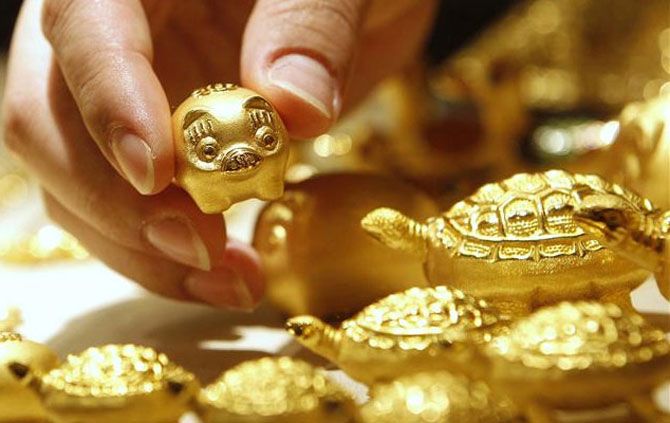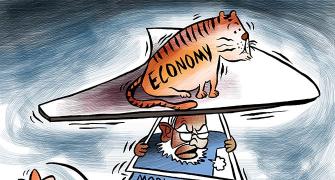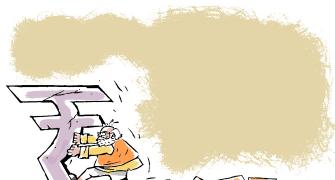But whatever you do, be prepared to hold on to your positions and keep your nerve, advises Devangshu Datta.

The Reserve Bank India's (RBI's) Monetary Policy Committee has reduced the policy rate for the fourth time in succession.
This was expected although the quantum of the cut was an unusual 35 basis points.
Coupled to other central bank reviews in July, it gives us a reasonable picture of medium term trends.
Every central bank agrees global growth will be lower through the next year.
The trade war enters a new phase with further tariff impositions by US President Donald Trump and inevitably, retaliation by China.
This will hit the two largest economies in the world.
The UK is probably headed for a disorderly Brexit, with no deal.
That will kill growth in the EU and in Britain.
Japan Is also looking at a flat year, possibly even another period of recession.
There is every likelihood that growth estimates will be cut again, as the year progresses.
Low global growth means poor prospects for exporters.
But on the flip side, many imports will get cheaper as commodities go bearish.
Industrial metals have been down for a while on low demand.
But energy prices could see more volatility.
There is over supply of crude and gas in global markets but there is also fear of supply disruptions.
That's the major reason prices have not gone through the floor.
However, in the last month, there has been a downturn.
Energy markets are now betting that the Iran-US face off will not end in war that blockades the Straits of Hormuz.
The RBI's policy document listed many high speed indicators that suggest generic slowdown.
Auto sales are down for example, across all segments.
The corporate results for Q1 back up this assessment as do GST collections.
Given a poor monsoon, agriculture is not expected to pick up much.
Slow agricultural growth implies rural and semi urban demand will not rebound much.
Even service exports are slower, looking at IT industry results and guidance, which suggests that "invisibles" growth is going to be muted in tandem with physical exports.
Lower policy rates should translate into lower commercial rates and lower bond yields.
But the positive impact on the bond market may be mitigated by a pullback on the decision to float overseas sovereign bonds.
If the hard currency pool isn't tapped, government borrowings will be higher in rupee bond markets and thus, crowd out corporate borrowings.
Lower rupee interest rates will mean currency risk increases for overseas investors.
Any hard currency investor must consider the return from rupee debt versus the return from hard currency debt.
They will want more rupees per USD (or Euro, Yen, etc.) to ensure that the interest arbitrage remains favourable.
If the rupee return falls, the rupee should depreciate.
This risk increases due to the brinkmanship on Kashmir.
Indeed, the rupee has taken a beating in the past few sessions.
This could be reversed if every major central bank starts another round of easing and that is quite possible.
But it would be prudent to assume the rupee is headed down, given a high fiscal deficit and high external deficits.
Indeed, most analysts and most trading models are indicating 72-73 as a likely range, by end of this quarter.
The specific targets may be missed by large margins but the trend will, almost certainly, be down.
Under the circumstances, it's not surprising that gold (and also silver) are expected to continue their respective bull runs.
Precious metal is supposed to be the traditional store of value during uncertain times and the next year will clearly be one of those periods.
The RBI expects inflation to pick up slightly in the second half while remaining on the lower side of the targeted 4 per cent.
It has cut growth estimates.
Sentiment is also down across the investment community.
At least two-thirds of listed stocks are trading lower than a year ago.
The Nifty has now dropped below its own 200-Day Moving Average.
This is usually a reliable signal of a bull market.
Translated from jargon, it means the market is trading below its own 9-month trend.
It could well fall a lot lower before it recovers.
Investors will have to ride this out.
Averaging down is one way.
Hedging with gold is another.
Building a hard currency portfolio is another possibility.
Be prepared to hold on to your positions and keep your nerve.










